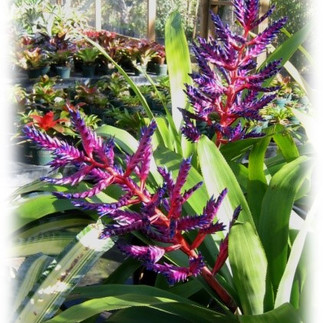Bromeliad species
- Deborah

- Jan 1, 2022
- 2 min read

Use: Bromeliads may be seen in the landscape as a single accent piece, or in groupings. But, because of their growth habit, some specimens can turn into a mass fairly quickly. They also can be attached to trees and thrive.

Characteristics: There are many different species of Bromeliads, and with only a few exceptions, their growth habit is universal. Some produce a definite flower while others give their color and interest through the color of their leaves. Over time, the original plant will send out 'pups': these are small immature plants that will eventually grow to the same size as the original and take on the same coloration. As the pups grow, the original plant declines and will eventually die. The pups (usually two or more) will grow and fill the space where the original plant was planted. So, your once singular accent is now two or three. Pups or even full-grown plants are easily removed and relocated to keep Bromeliads contained to their designated area. Bromeliads have low water requirements and are a great choice for adding color to shady locations. Watering consists of keeping the center cup full a few times a week.

Trimming: No formal trimming is needed. After flowering, remove expired flowers as they brown, and then the mother plant as it starts turning brown. If you do not, they will rot. Let the new pups grow. If you have too many, remove the extras and find them a new home.
Fertilization: Though not fertilizer hungry, they will grow quicker with a sprinkle of granular palm fertilizer in March and October. They also respond well to Peter’s liquid 20-20-20 -20 or various types of orchid foods. Do not use micronutrients or copper.
























Comments